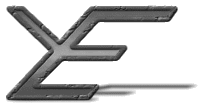The design model used for the creation of the YEdit engine was the spiral design model because the iterative model of creation and orderly refactorings, were a good match for the project.
Some other areas were looked at in the process of refining the initial idea of enhancing communication over the Web. One of the first was the presentation of information, the split between the information (content) and the display environment (context). Test prototypes were created that used this split to enable one version of the content to be used for both the text only and the graphical displays.
Another area that was looked at was multi-tiered/multi-homed web sites. This was to separate the production of information from the display of that information. This means that one web server could look after all the active content (such as returning all the information from a storage system), and another web server (either on the same machine, or preferable in a different location, with a different Internet connection) could display a copy of the active content, which has been stored in static files. This gives higher reliability, as the area that is most likely to have a problem is the active content (as there is more to go wrong), while the static web site can still display all the information up to the point of the problem. Or if the static site has a problem, all traffic can be moved to the active site.
Two areas that may look similar on the surface were looked at, BSCW/CSCW, and WebDAV.
BSCW/CSCW (BSCW being the main version of CSCW for the Web) enables collaboration over the Web and is a 'shared workspace' system that supports storage and retrieval of documents and sharing information within a group. This is integrated with an event notification and group management mechanism in order to provide all users with awareness of others activities in the shared workspace. In particular BSCW is a networked support mechanism, which provides support for co-operative document creation, (for example threaded discussions, group management, search features, and more).
WebDAV is a protocol that "defines the HTTP extensions necessary to enable distributed web authoring tools to be broadly interoperable, while supporting user needs". The protocol includes some information that will be helpful for distributed authoring and versioning. It is very possible that in the future, any Web communication could use this protocol to communicate authoring and versioning information. WebDAV is a protocol, more specifically, it is an extension of HTTP/1.1, which adds new HTTP methods, and headers to the HTTP protocol, as well as how to format the request headers and bodies.
The design of the engine was such that the access to the engine, the access to the file storage system, and the interface between them were all separated out. This meant that with the middle interface linking the user and server interfaces, the user and server interfaces could be created separately, and could be changed to suit the environment that surrounds the engine. In order to create this prototype, the server interface was implemented using access to the system's file system, and the user interface was implemented using a web-based interface. The web-based interface has three main parts (Refer to Figure 4: Interaction of the main components of YEdit). The read servlet displays web pages; the browse servlet allows interaction with the information about the different versions, and access to the edit servlet. The edit servlet allows the web pages to be created and edited. The engine was created using Java servlets, as they provide a good match to the requirements of the engine.
The engine was working here and has had user testing both there and on test machines, as well as testing throughout the creation process.
| Previous: | 4.15 Testbed |
| Next: | 5.00 Conclusion |
